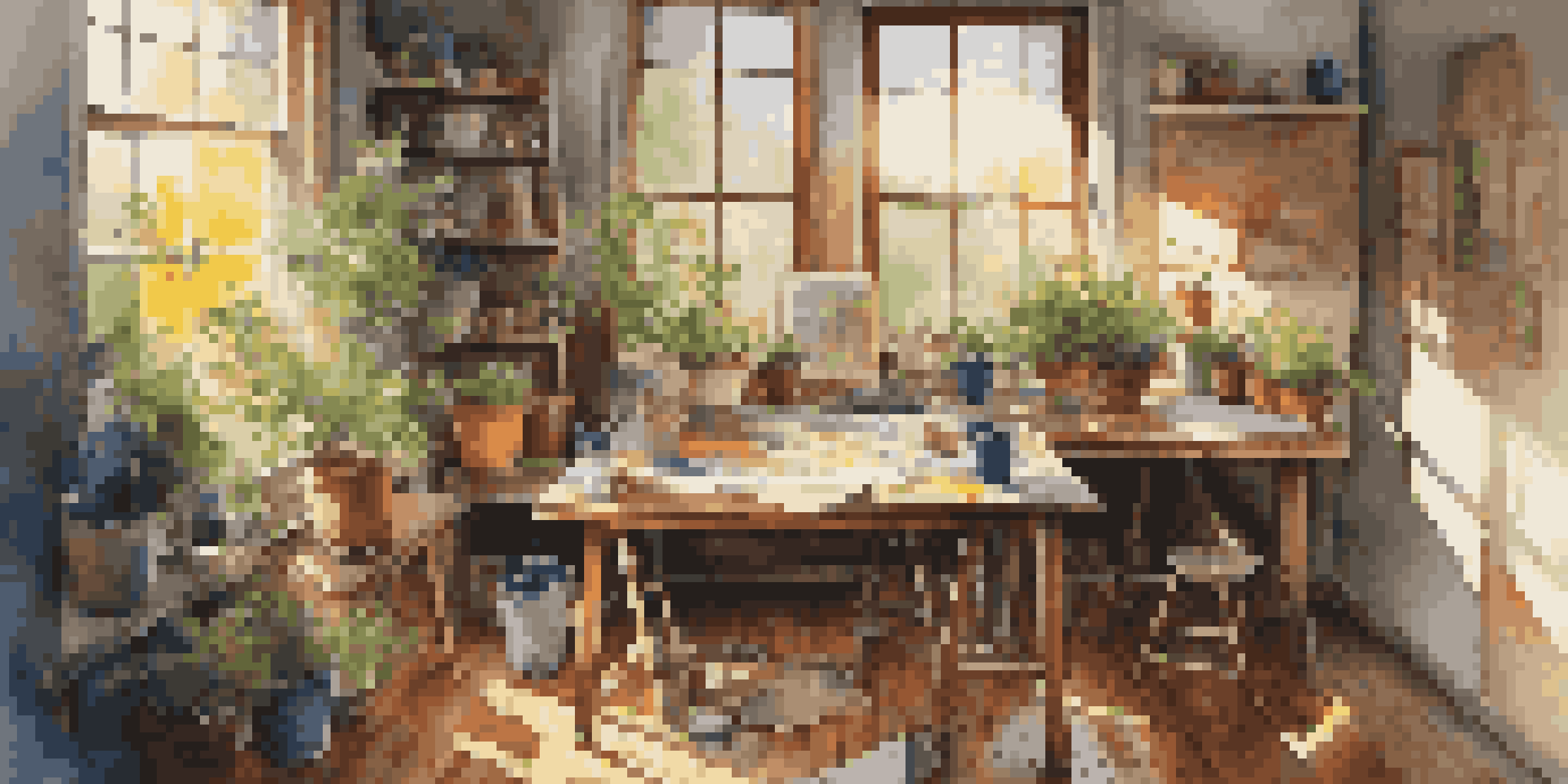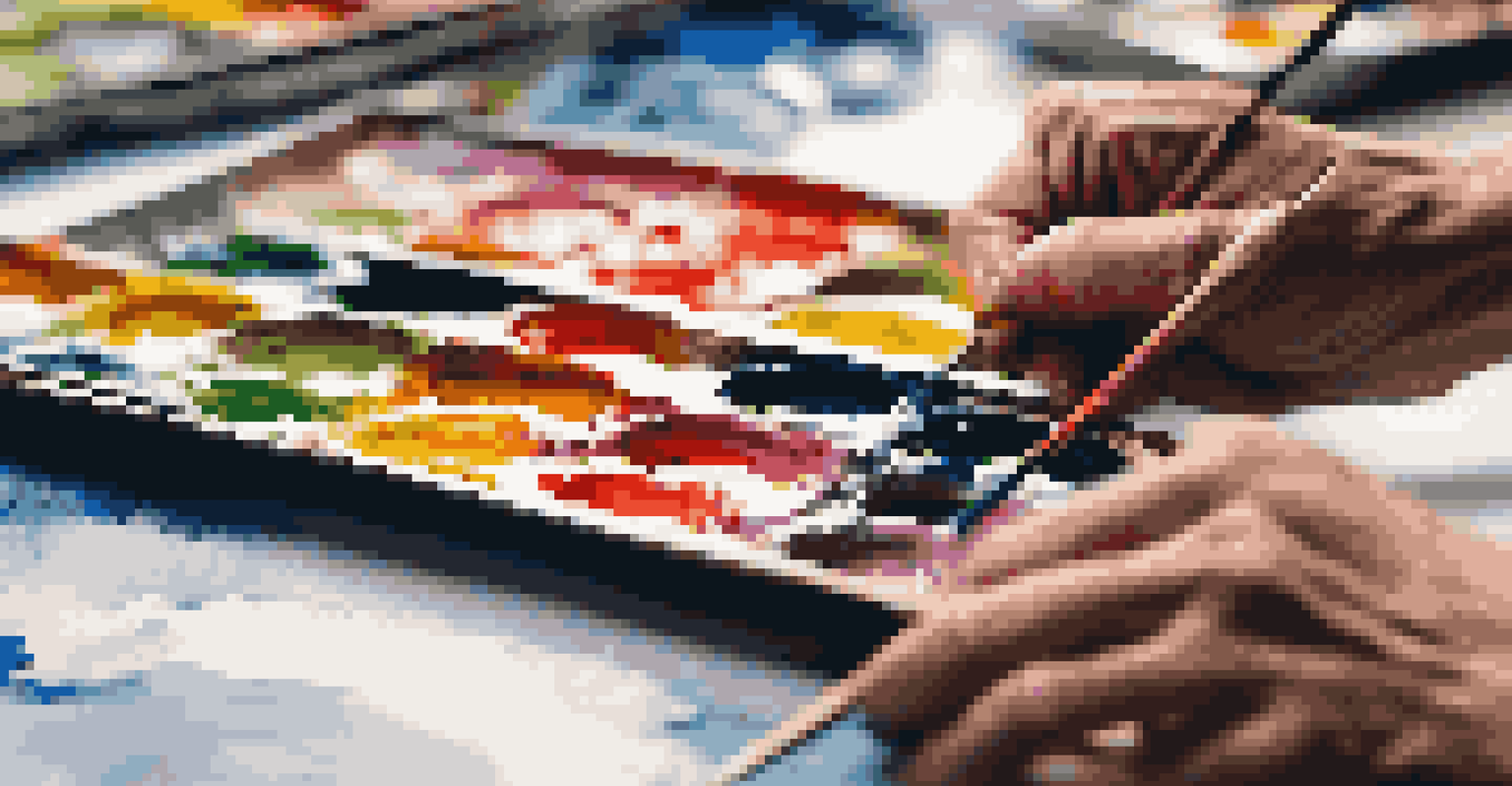Building an Online Portfolio: Artists and Social Media

The Importance of an Online Portfolio for Artists
In today's digital age, having an online portfolio is essential for artists. It serves as a virtual gallery where you can showcase your work to a global audience. Think of it as your personal exhibition space, accessible 24/7 without the constraints of a physical location.
Every artist dips his brush in his own soul, and paints his own nature into his pictures.
An online portfolio not only displays your creativity but also helps you build your brand. It's an opportunity to tell your story, share your artistic journey, and connect with potential clients or collaborators. This personal touch can make all the difference in a competitive market.
Moreover, an online portfolio can enhance your visibility in the art world. By optimizing it for search engines, you increase your chances of being discovered by art enthusiasts and professionals alike. This is crucial for establishing a lasting presence in your field.
Choosing the Right Platform for Your Portfolio
When it comes to creating your online portfolio, selecting the right platform is key. There are various options available, from website builders like Squarespace or Wix to portfolio-specific sites like Behance or ArtStation. Each has its strengths, so consider what features matter most to you.

For instance, if you want a customizable design, website builders may be your best bet. On the other hand, platforms like Behance offer built-in communities where you can network with other artists and gain exposure. It's about finding the right fit for your style and goals.
Showcase Your Art Online
An online portfolio acts as a personal gallery, allowing artists to showcase their work to a global audience at any time.
Additionally, think about your technical skills. Some platforms are user-friendly, while others may require a bit more know-how. Don’t shy away from asking for help or using tutorials to get started; the right platform can significantly enhance your online presence.
Crafting a Compelling Artist Bio
Your artist bio is often the first thing visitors will read, so make it engaging and authentic. Start by sharing your background, your artistic influences, and what drives your creative process. This personal connection can draw people in and make them want to explore your work further.
Art is not freedom from discipline, but disciplined freedom.
Keep it concise, ideally around 100-200 words, focusing on key highlights of your career. Mention any exhibitions, awards, or notable projects that showcase your accomplishments. This not only builds credibility but also provides context for your art.
Lastly, infuse your personality into your bio. Use a tone that reflects who you are as an artist—whether it's playful, serious, or somewhere in between. A well-crafted bio can create a lasting impression that resonates with your audience.
Showcasing Your Best Work Effectively
Selecting which pieces to showcase is vital for making an impact. Choose your best work—pieces that you feel represent your skills and artistic vision. Quality over quantity is the mantra here; a few stunning pieces can speak volumes more than a crowded gallery of all your work.
Consider organizing your portfolio by theme, medium, or project type. This not only makes it visually appealing but also helps viewers navigate through your work effortlessly. Think of it as curating a mini-exhibition that guides the viewer's experience.
Craft an Engaging Bio
A compelling artist bio helps establish a personal connection with viewers, highlighting your background and artistic journey.
Don't forget to provide context for each piece. Including titles, descriptions, and the stories behind your work can deepen the viewer's connection. This narrative adds layers to your art and invites people to engage with it on a more profound level.
Leveraging Social Media to Promote Your Portfolio
Social media is a powerful tool for artists to promote their online portfolios. Platforms like Instagram, Pinterest, and TikTok allow you to share your work and process with a broad audience. Think of these platforms as additional galleries where you can reach potential fans and buyers.
To effectively promote your portfolio, regularly post engaging content that highlights your art. Share behind-the-scenes glimpses, progress shots, or even short videos of your creative process. This not only keeps your audience engaged but also encourages them to visit your portfolio for more.
Engagement is key on social media. Respond to comments, connect with other artists, and participate in relevant hashtags or challenges. Building a community around your art can lead to valuable connections and opportunities that benefit your artistic career.
Building a Personal Brand as an Artist
Establishing a personal brand is crucial for artists looking to stand out. Your brand encompasses your style, message, and the overall experience you deliver through your art. Consider what makes you unique and how you can communicate that through your portfolio and social media.
Consistency is vital in branding. From your portfolio layout to your social media posts, maintaining a cohesive look and feel helps reinforce your identity. This could include a specific color palette, logo, or even the tone of your writing—everything should reflect your artistic voice.
Leverage Social Media Effectively
Utilizing social media platforms can significantly enhance your portfolio's visibility and help build a community around your art.
Don't hesitate to share your journey and values as an artist. Whether you're passionate about sustainability, cultural heritage, or mental health, these elements can resonate with your audience and create a deeper connection. Authenticity in branding can lead to loyal followers who appreciate your work.
Analyzing Your Portfolio and Social Media Performance
Once your online portfolio and social media are up and running, it's essential to track their performance. Use analytics tools available on social media platforms to understand what content resonates with your audience. This insight can guide your future posts and portfolio updates.
Look for patterns in engagement—what types of posts receive the most likes, comments, or shares? Identifying these trends helps you tailor your content strategy to better meet your audience's interests. Remember, adapting is key in the ever-evolving digital landscape.

Don't forget to revisit your portfolio periodically as well. As you grow as an artist, your aesthetic and focus may shift. Updating your portfolio to reflect your current work ensures it remains a true representation of your artistic journey and keeps it relevant.